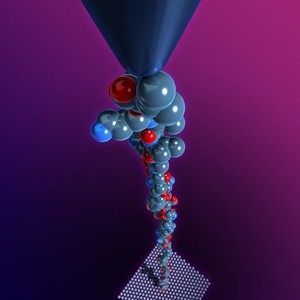News
Study: Blood vessels store, secrete key blood-clotting protein
Rice University researchers solve long-standing mystery about hemophilia protein
Nov 2, 2015
 |
Rice University bioengineering researchers Joel Moake and Nancy Turner have solved a long-standing mystery about where the body stores and deploys blood-clotting factor VIII, a protein that about 80 percent of hemophiliacs cannot produce due to genetic defects.
For years, conventional medical doctrine was that factor VIII was made in the liver, but studies over the past 10 years showed it was made in endothelial cells — the cells that line the walls of blood vessels — in the liver, heart, intestines and other organs. The new study, which is available online in the journal PLOS ONE, offers the first clear images of where factor VIII is stored within those cells. Researchers found the protein is both stored and secreted from a specialized organelle inside the cells that is also known to store and deploy another important blood-clotting protein called “von Willebrand factor” or VWF. (…more)
Researchers find link between blood clotting, immune response
Rice University research suggests trigger for immune response and blood clotting
April 1, 2013
Rice University researchers Joel Moake and Nancy Turner have found an unexpected link between a protein that triggers the formation of blood clots and other proteins essential for the body’s immune response. The finding could lead to new treatments for thousands of patients who suffer from diseases associated with abnormal blood clotting or excessive inflammation.
The research is available online in the March 29 journal PLOS ONE. (…more)
Stressed proteins can cause blood clots for hours
Physicists probe stress-induced changes in clot-forming protein
March 5, 2013
Research from Rice University, Baylor College of Medicine (BCM) and the Puget Sound Blood Center (PSBC) has revealed how stresses of flow in the small blood vessels of the heart and brain could cause a common protein to change shape and form dangerous blood clots. The scientists were surprised to find that the proteins could remain in the dangerous, clot-initiating shape for up to five hours before returning to their normal, healthy shape.
The study focused on a protein called von Willebrand factor, or VWF, a key player in clot formation. A team led by Rice physicist Ching-Hwa Kiang and co-author Joel Moake found that “shear” forces, like those found in small arteries of patients with atherosclerosis, cause snippets of nonclotting VWF to change into a clot-forming shape for hours at a time.
The findings appeared online in the March 5 journal Physical Review Letters.
The research was supported by the National Institutes of Health, the National Science Foundation, the Alliance for NanoHealth, the Welch Foundation, the Mary R. Gibson Foundation and the Mabel and Everett Hinkson Fund. Study co-authors include Rice graduate students Sithara Wijeratne and Eric Frey, former Rice graduate student Eric Botello, BCM researchers Hui-Chun Yeh and Angela Bergeron, Rice undergraduate Jay Patel, PSBC’s Zhou Zhou and Rice senior research technicians Leticia Nolasco and Nancy Turner. (…more)



